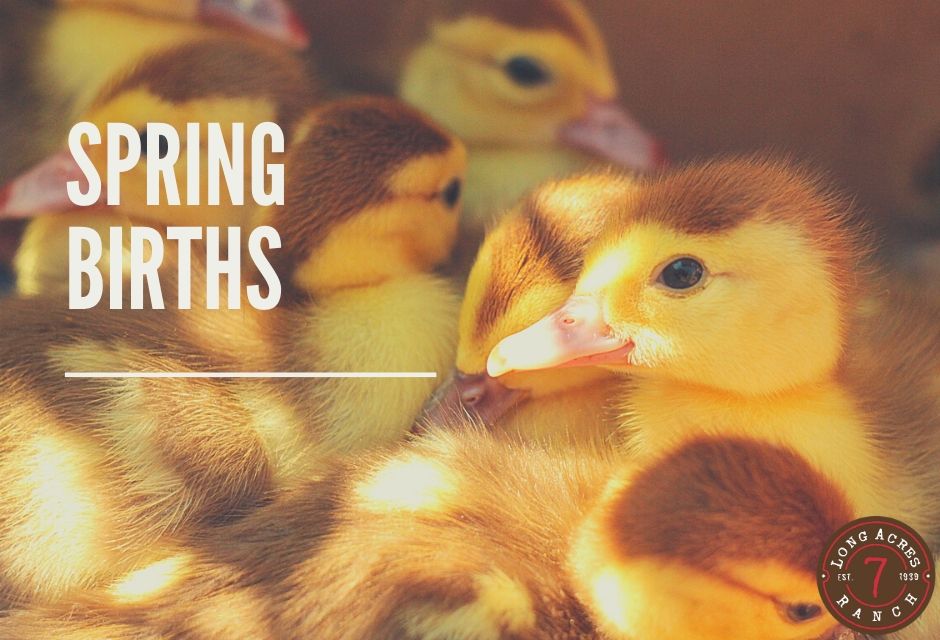Have you ever wondered why baby animals tend to be born in the Spring? What makes this season so different that we can easily spot baby ducks, chicks, calves and bunnies? There are a few contributing factors to this phenomenon. First, the more favorable weather conditions are one factor. Warmer temperatures and less chance of harsh weather create an environment that makes it easier to have a brand-new baby living outdoors. The length of the day also plays a factor – longer days means more time to find food and more time for the food to receive the sunlight it needs to grow. Another reason could have to do with air pressure. When air pressure is high, there is good, dry weather which discourages rainfall and, again, the harsh weather that is not favorable for babies. Finally, being born in the Spring allows babies the time they need to fully develop and learn to live on their own before the winter temperatures set in.
Now, let’s learn a little about some of the animal babies you could see at Long Acres Ranch.
DEER
A baby is called a fawn. A doe can birth one to three fawns at a time and they are usually around five pounds. Fawns are usually born with white spotted fur to help them camouflage. They are typically born in the month of May and stay with the mother for about one year. They can walk within a few hours of birth, but usually lay still for about three weeks gaining strength. By that time, they have grown enough to outrun most predators like bobcats, foxes and coyotes. A mother will not abandon a fawn if human interaction occurs but it is strongly discouraged.
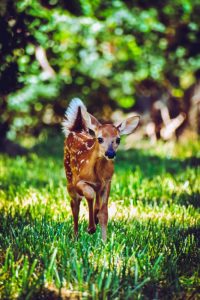
Photo by Chris F from Pexels
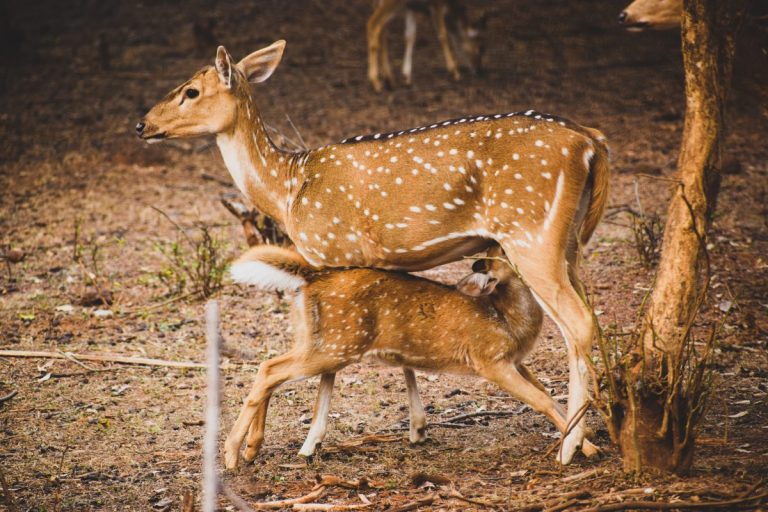
Photo by Rani Sahu from Pexels
DUCKS
A baby is called a duckling. A mother duck can birth from seven to twelve ducklings after sitting on them for abut 28 days. If they are able to avoid predators like big fish, bullfrogs, large birds, and snakes, they will feed mostly on tadpoles and small insects. They learn everything they need to know about survival from watching their mothers. They are ready to venture to the water only about 10 hours after hatching and are mostly independent at only two months.
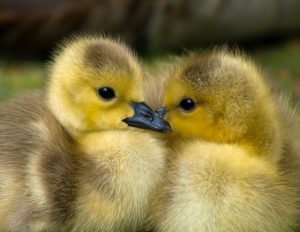
Photo by Victor B from Pexels
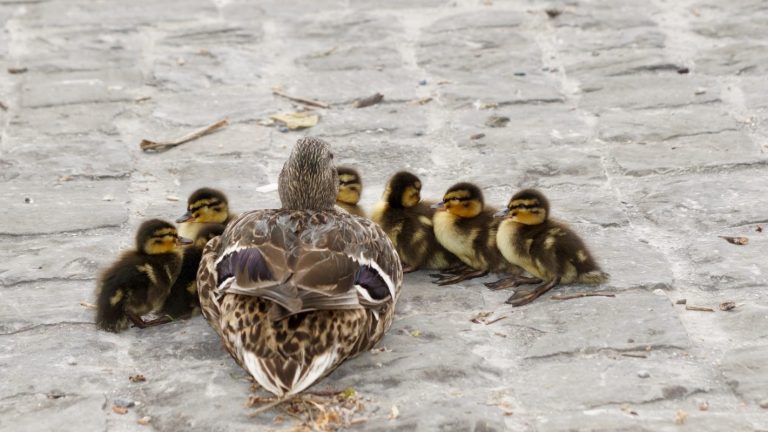
Photo from Pexels
RABBITS
A baby is called a kit. The mother rabbit can have up to nine babies and spends little time with them right after they after they are born. The kits burrow deeply during the day and feed at night, for about 5 minutes at a time. This helps keep them safe from predators like foxes, bobcats, or wild dogs. Kits are born without fur but develop a full coat within a week. Their eyes open in 6-10 days and they are fully weaned at about three weeks. Handling baby rabbits will not cause the mother to abandon them but if a person tries to raise a wild kit, there is a 90% mortality rate so contacting wildlife authorities is the best course of action if you find baby bunnies. Kits can be ready to start families of their own at two to three months.
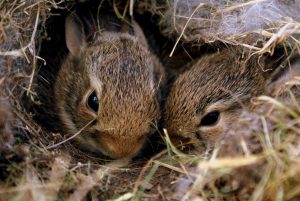
Photos from Pexels
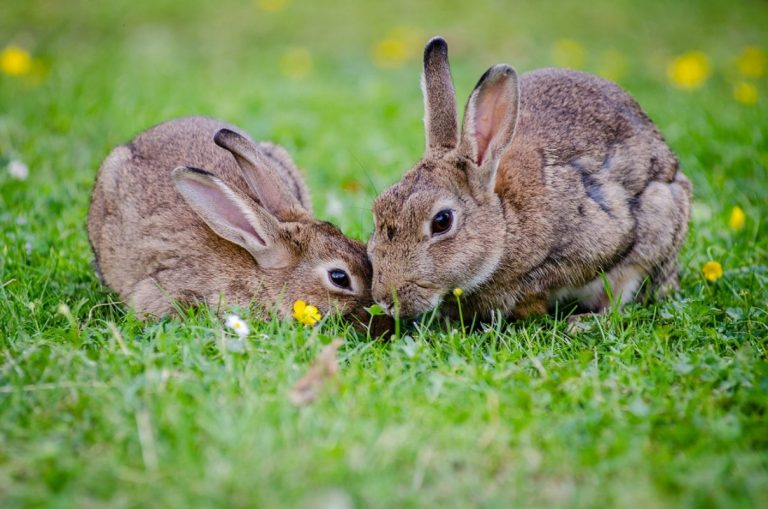
FOXES
A baby is called a pup. Females have babies usually once a year and they can have from one to nine pups. When fox pups are born, they cannot see, hear or walk. The mother cares for them while the father hunts for food. They are able to venture out on their own at seven months old but usually have very short lifespans of only about three years. They have great eyesight and are nocturnal, hunting at night and eating mainly mice, rabbits, birds, and fruits and bugs.
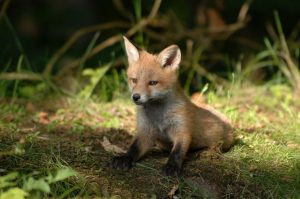
Image by Tom Frydenlund from Pixabay
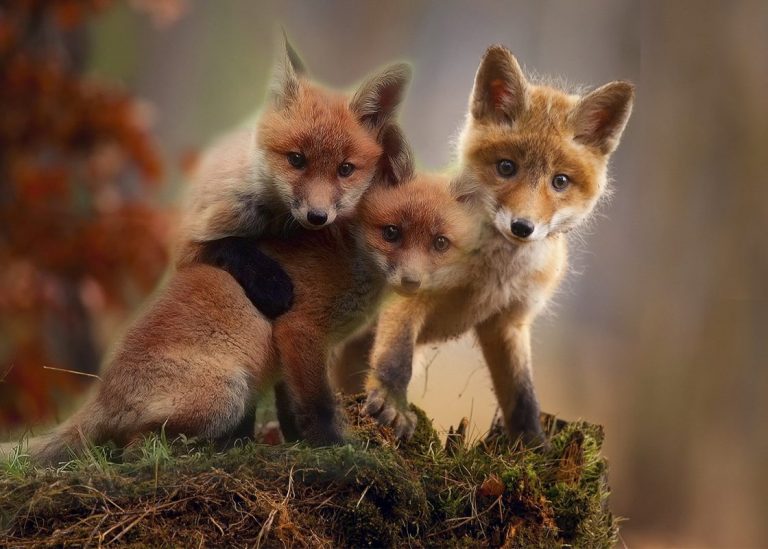
Image by ArtTower from Pixabay
BOBWHITE QUAIL
A baby is called a chick. A female has up to 13 eggs. When baby quail are first born, their eyes are open and within a few hours they can follow their parents around. It takes a few weeks though for them to fly to avoid predators. Predators number many (snakes, alligators, bobcats, hawks) and very few babies make it to adulthood. Their best defense it to freeze and hope their camouflage keeps them hidden. Typically, it takes about 175 days for chicks to reach maturity so they will start to find their own mates the spring after they are born.
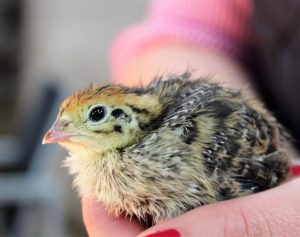
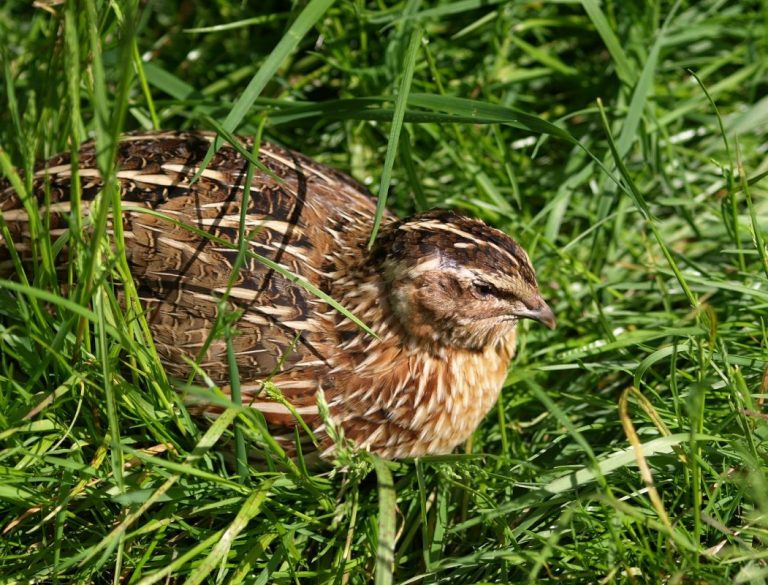
Are these animals precocial?
Precocial animals are those born relatively mature and mobile from the moment of their birth or hatching. The opposite of this is altricial. The biggest span of species in this classification is in birds. Precocial birds hatch with their eyes open and are covered with downy feathers that are quickly replaced with adult-type feathers. Altricial animals, on the other hand, are born blind, naked, incapable of walking and totally rely on their parents for food and warmth.
So what do you think – are the animals born at Long acres Ranch precocial or altricial?
For more information about baby animals please visit –
https://learning-center.homesciencetools.com/article/learn-about-baby-animals/
https://learning-center.homesciencetools.com/article/animal-babies-spring-science-experiments-kids/

